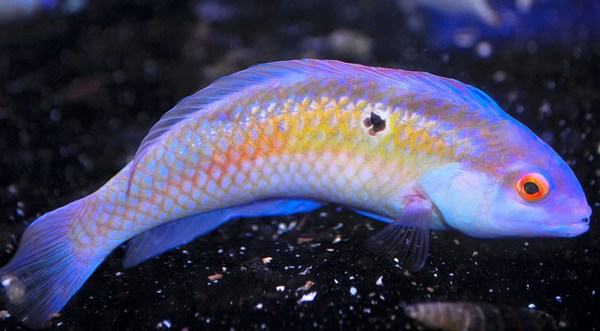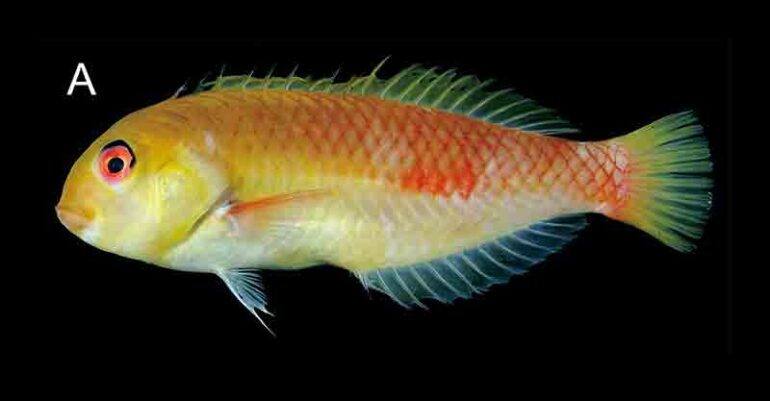Novaculops compressus is a new species of the small group of razor wrasses that are fun and different from the usual aquarium labrids. Unlike the usual fairies and flasher wrasses, the razor wrasses are uniquely adapted to take shelter in sandy zones, and now we have one more species to appreciate from this group.
As the name implies, the new Novaculops compressus has a body that is flattened on its sides, with the reduced profile making it that much easier to dive into loose sand or substrate. This feature is not unique to this species as the Xyrichtys which come to mind first when describing razor wrasses are even more laterally compressed.

But while the ‘true’ razor wrasses might be even more inclined to go sand diving, the Novaculops are somewhat more colorful even if their bodies are mostly devoid of well defined patterns. Novaculops halsteadi is the most ‘common’ species encountered in the aquarium hobby, recognizable by a slight rainbow iridescence and a small black spot bordered in white.
The newly described Novaculops compressus appears yellow overall with bright patches of orange color on the dorsal and mid-body areas, with a white ventral area. Pectoral fins and lips are also bright orange while the tail fin is mostly yellow overall. This new razor wrasse or sandy wrasse was described from two specimens originating from the northwest Pacific Ocean around Japan and the Philippines by Yoshino Fukui in a recent edition of ZooTaxa.



